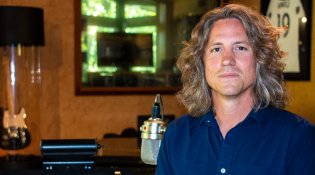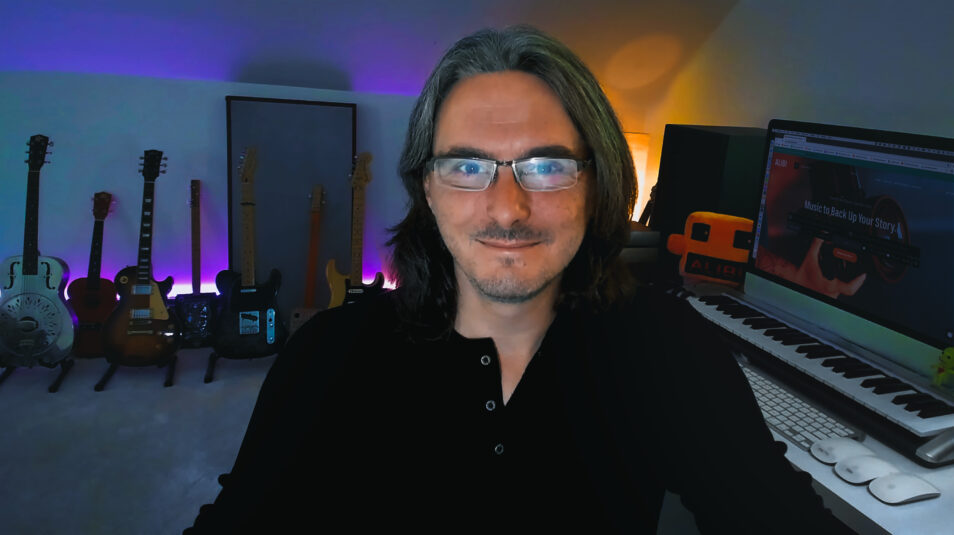Tech Focus: Production Music, Part 1 — Technology, Business Upheavals Create Challenges and Opportunities
AI and the RSN bubble are among current disruptions in the sector
Story Highlights
Production music has been one of the stabler sectors of the sports-media business. Football always seems to want its triumphal horns and crunchy guitars while golf relies on its pastoral themes, and so on. That’s even as sports clients ask for more of the same but different, or “modern takes on classic themes,” as the head of one music house phrases it. It’s a typical pattern for sports-production music: the classic themes endure, but elements of the current culture find their way in.
But, as in other media sectors, a combination of technology and business disruptions has been churning the waters around production music. Players in that market are aware of it but say it’s too soon to tell how it all will play out.
AI Is on the Horizon
As is likely to happen with everything AI touches, artificial intelligence will probably affect production music, eventually.
Sound Ideas Sales Manager Peter Alexander believes that no algorithm could effectively imitate the emotional qualities that music for sports applications requires. “You need to be able to get crowds up on their feet and cheering predictably,” he says. “It’s hard to imagine a machine able to compose at the same level as a human, at least not without human supervision. But it’s still early days, so it’s hard to predict how AI will shake out for production libraries.”
AI has drawn wary looks from the music industry in general: composers see it as potentially replacing them; publishers view it as the next iteration of sampling, which uses data from existing IP — a sound or a song — as the basis for a “new” work, a path some expect AI to follow in music creation.
However, production-music companies may take a more nuanced view of AI: as both a source of potential infringement but also as a way to lower the costs involved in music creation and production.
The AI is definitely a topic of consideration in the production-music sector. According to Morgan McKnight, executive director, Production Music Association, a non-profit that works with production-music libraries, composers, performing-rights organizations, and technology solutions to promote the sector, AI is viewed by many as potentially one more tool to help foster the use of production music, particularly from established providers at a time when almost anyone can make credible music on an iPhone and an app.
“It’s too early to tell what the impact of AI will be,” she explains, “but it’s seen already as potentially a tool that could make life easier, such as metadata for creating remixes.”
She adds that new avenues, such as social media, create more demand for production music and stimulate the need for variations, such as alternate mixes. “Hopefully, it becomes another way to create stories for sports and contribute to the authenticity of those stories.”
AI-based music-creation platforms are proliferating. Bandlab’s Songstarter will generate “three unique musical ideas” for composers. Splice offers a similar CoSo tool, and TikTok owner ByteDance is reportedly readying its own app for its 1 billion users.
RSN Disruption = Opportunity
Recent disruption in the RSN sector, which has seen streaming and cord-cutting push regional networks like Diamond/Bally Sports to the financial edge, has the potential to create opportunity for production-music providers, says Whitney Arnold, president, Stephen Arnold Music.

Stephen Arnold Music’s Whitney Arnold: “A lot of teams need to create their own brand identities through music.”
“We’re seeing a lot of teams taking back their broadcast rights and, with them, the need to create their own brand identities through music,” he says. “When they were part of a larger network brand, there was often a one-size-fits-all approach to music and graphics for all the teams and leagues broadcast by a network. Now we can help them choose and create custom music branding.”
Stephen Arnold Music Director, Brand Strategy, Russell Boiarsky points out that, even as sports moves into new distribution paradigms, such as Apple’s acquisition of MLS streaming rights, a team’s desire to hold on to its own identity branding will survive, creating a need for vendors like production-music houses to take on creative duties.
“[This shift] is going to create a ton of new opportunities,” he says. “But it’s going to be the Wild West out there for a while.”
Matthew Gutknecht, director, sports entertainment, APM Music, believes that the classic broadcast-sports model remains strong for many leagues and teams though not for every market.

APM Music’s Matthew Gutknecht: “When technology outpaces legalities, you have to wait to see a legal precedent set [for AI]. It’ll all get figured out.”
“Yes,” he continues, “there will be opportunities [for production music], but the larger picture is that the whole local and regional and OTT broadcast ecosystem has changed drastically. We’re monitoring all of that.”
Gutknecht takes a similar view with AI, waiting for its inevitable legal concerns to show some resolution: “When technology outpaces legalities, you have to wait to see a legal precedent set. This is like sampling was years ago, and that finally found its footing, legally. Now it’s more like NFTs were a year or so ago. It’s TBD. It’ll all get figured out.”
Little Movies, Big Names
Increased use of narrative content — short documentaries and player and coach profiles that increasingly pepper games and multi-day events like drafts and all-star events — provides other opportunities for production music. In May, Warner/Chappell Production Music (WCPM) launched ScoreMongers, a new music library it describes as “music specifically designed for narrative programming.”

Warner/Chappell Production Music’s Steve Swenson cites new sports leagues as another growth factor in production music.
According to WCPM Director, Licensing, Steve Swenson, the package is organized into LP-type albums — each with consistent and related themes, tempos, even key signatures — intended as readymade musical scores for the narrative content. The collections also reflect another longer-term trend in sports music: cinematic ambience and sound design. The collections’ composers include award-winning film and TV composers, such as Michael Brook (Into the Wild, The Vow) and Lisbeth Scott (True Blood, Salem’s Lot, Gratitude Revealed).
“Working with those athletes on [custom] music can be complicated,” Swenson says. “They have a lot in the way of guidance from agents and sponsorships.” Working with the top-tier agencies that often represent those athletes, he adds, is a pathway to connecting with them in an increasingly competitive area of the sports/entertainment nexus. Forbes estimates that CAA manages more than $14 billion in active playing contracts for its individual sports clients, followed by WME Sports ($588 million), Excel Sports Management ($499 million), and Octagon ($212 million). “The best way to work with [the athletes] is to listen to what they need and are using now on social media and support them that way.”
Yet another burgeoning avenue is the growth of new sports leagues, such as the Saudi-backed LIV Golf, which Swenson says can “shake things up, musically” for genres like golf. “Which might not be a bad thing.”
(It apparently has already done that. Yesterday, the PGA and LIV Golf, whose slogan “Golf, Only Louder” is underscored by DJs and PA systems blaring dance music and other genres deployed across the links, announced a merger.)
More SFX, Esports
Beyond the jagged edges of AI and RSNs, the more quotidian concerns of production music continue to evolve.
“In 2023,” says Betsy Todd, director, marketing and licensing, VideoHelper, “we’ve seen sports-music trending familiarly toward anthemic and inspirational orchestral — but with just enough attitude — in advance of big games and playoff runs and a wide range of hip-hop — old-school, dark trip hop, orchestral mashups — in [everyday game] coverage. Swagger-filled rock and funk remain popular for motorsport, football, and basketball, while gentler piano, synth, and string tracks are unsurprisingly useful for golf, tennis, and equestrian competition.”
Indie rock/pop and blues play a small but important role in sports music, she adds, as networks strive to differentiate their sounds.
However, there are some new wrinkles at the edges. For instance, Sound Ideas has recently been building dedicated libraries for sound effects for such sports as figure skating and archery. These are used to augment the sports’ nat sounds, such as the swish of a skate blade on ice or the thwock of an arrow hitting the target. Alexander notes, though, that the usual application of such augmented audio for postproduction is increasingly used for live broadcasts, a trend he says was accelerated by the use of augmented crowd sounds during COVID venue shutdowns.
“Before, we had generic libraries for this sort of sound for major sports,” he says, “but now we’re building more specialty [sound-effects] libraries for motorsports and other sports. And the demand for crowd sounds that became big during COVID is continuing.”

Alibi Music’s Jonathan Parks sees custom music as a good fit for the emotional and dynamic demands of sports music.
Alibi Music, which since its founding in 2011 has focused on custom music for film and television trailers and promos, works largely in the action/adventure genre, which Alibi Music founder/Executive Producer Jonathan Parks considers a good fit for the emotional and dynamic demands of sports music. Alibi has increased its work for the NBA’s Golden State Warriors and L.A. Kings, the WWE, and some individual teams. In fact, its esports trailers, such as one for the NFL Pro ERA Oculus VR simulation game, represent an intersection of cinema and sports bar.
According to Parks, music stems — individual mixed tracks of certain instruments, such as drums, guitars, keyboards, vocals — are as much in demand as the conventional full-track mix, allowing users to remix songs for particular needs. Stems and alternate mixes of songs provide teams with more variety and options, he says: “They can also cut and edit stems and reconfigure the tracks to their needs faster, even as a game is going on.”
Between the rise of demand for music by teams and leagues and the looming specter of AI, production music has had an interesting year. The PMA’s McKnight sees more in the sector ahead: more focus on SFX libraries, more social-media demand for music, and more types of applications, such as custom music for cheerleading competitions.
“It’s all over the place now,” she says. “It’s music: wherever it’s needed, it goes.”
Click here for Tech Focus: Production Music, Part 2 — Libraries Have More To Offer Than Ever.
